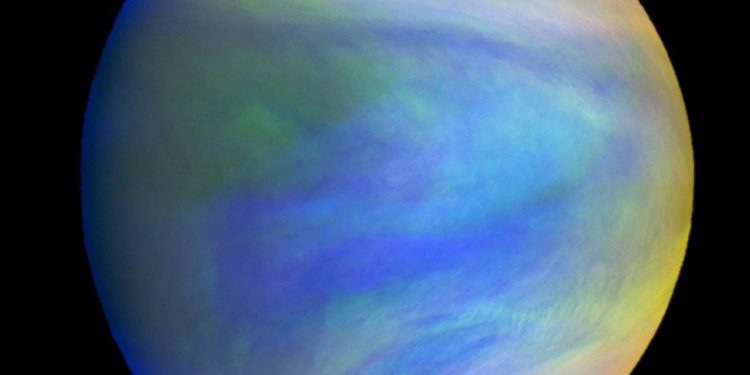Washington: Venus may have hosted liquid water for 2-3 billion years, until a dramatic transformation starting over 700 million years ago resurfaced around 80 per cent of the planet, according to a NASA study which has been published recently.
The research gives a new view of Venus’s climatic history and may have implications for the habitability of exoplanets in similar orbits.
Forty years ago, NASA’s ‘Pioneer Venus’ mission found tantalising hints that Earth’s ‘twisted sister’ planet may once have had a shallow ocean’s worth of water.
To see if Venus might ever have had a stable climate capable of supporting liquid water, researchers from NASA Goddard Institute for Space Studies (GISS) in the US created a series of five simulations assuming different levels of water coverage.
In all five scenarios, they found that Venus was able to maintain stable temperatures between a maximum of about 50 degrees Celsius and a minimum of about 20 degrees Celsius for around three billion years.
A temperate climate might even have been maintained on Venus today had there not been a series of events that caused a release, or ‘outgassing’, of carbon dioxide stored in the rocks of the planet about 700-750 million years ago, said the researchers
“Our hypothesis is that Venus may have had a stable climate for billions of years. It is possible that the near-global resurfacing event is responsible for its transformation from an Earth-like climate to the hellish hot-house we see today,” said Michael Way from GISS.
Three of the five scenarios studied by researchers assumed the topography of Venus as we see it today and considered a deep ocean averaging 310 metres, a shallow layer of water averaging 10 metres and a small amount of water locked in the soil.
Although many researchers believe that Venus is beyond the inner boundary of our solar system’s habitable zone and is too close to the Sun to support liquid water, the new study suggests that this might not be the case.
“Venus currently has almost twice the solar radiation that we have at Earth. However, in all the scenarios we have modelled, we have found that Venus could still support surface temperatures amenable for liquid water,” Way further stated.
Researchers said the cause of the outgassing that led to the dramatic transformation of Venus is a mystery, although probably linked to the planet’s volcanic activity. One possibility is that large amounts of magma bubbled up, releasing carbon dioxide from molten rocks into the atmosphere, they said.
The presence of large amounts of carbon dioxide triggered a runaway greenhouse effect, which has resulted in the scorching 462 degree average temperatures found on Venus at present.
“Something happened on Venus where a huge amount of gas was released into the atmosphere and couldn’t be re-absorbed by the rocks,” Way informed.
AFP






































